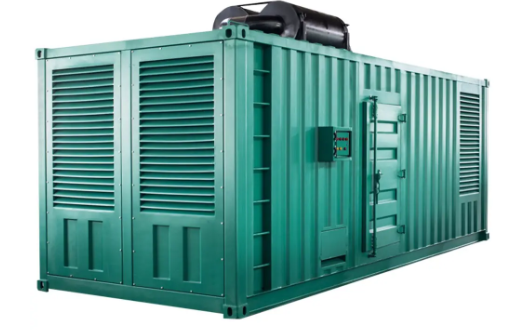Assessing Power Requirements for 30kVA Generators
Creating a Comprehensive Equipment List
When figuring out what power a 30kVA generator can actually handle, start with making a complete list of everything that needs electricity. Go through each room or area and jot down every device that draws power from the wall sockets. Lighting fixtures, air conditioning units, refrigeration equipment, office computers these all matter when calculating actual demand. Don't forget about those smaller items either like coffee machines or security systems that might seem insignificant but add up quickly. For better accuracy, note down both the wattage rating printed on each appliance and roughly how many hours per day it runs normally. Taking this methodical approach helps avoid underestimating requirements which could lead to buying a generator that's too small for the job at hand.
Calculating Starting Current Demands
Figuring out what kind of starting current our equipment needs matters a lot when picking the right generator. This initial surge, sometimes called inrush current, tends to spike way above what the motor draws during normal operation. Most folks calculate it by taking the running current and multiplying it against something called a start-up multiplier factor. When looking at specs sheets for things we regularly power like AC units or factory machinery, we'll notice they usually need much more juice at startup compared to regular running conditions. Getting this right means avoiding situations where generators shut down unexpectedly whenever big loads kick on.
Implementing a Safety Margin (10-20%)
Adding some extra capacity when figuring out what size generator to get makes good sense because it helps avoid situations where sudden power spikes might overload the unit. Most experts suggest going about 10 to 20 percent above what the total load actually needs. This gives the generator some breathing room so it runs smoother overall and lasts longer too. Think of this buffer zone as insurance against those moments when everything kicks on at once or when there's an unexpected need for more power later down the road. Generators that have been sized with this kind of margin tend to perform better over time and generally don't break down as often either.
Understanding kW vs kVA in Generator Selection
The Critical Role of Power Factor (0.8 Standard)
Power factor plays a really important role when picking out generators because it basically tells us how to turn those kVA ratings into actual usable kW power. Think of it as a measure of how efficiently electricity gets turned into something useful for whatever equipment we're running. Most businesses stick with a standard power factor around 0.8 for their operations. When figuring out what kind of real power we'll actually get from our generator, just take the apparent power measured in kVA and multiply it by this power factor number. Let's say we have a generator rated at 30 kVA. Multiply that by 0.8 and suddenly we're looking at only 24 kW of usable power available. Getting a handle on these power factor adjustments makes all the difference in properly sizing generators so there's no unnecessary waste of capacity while still making sure there's enough juice to go around during peak demand times.
Converting Your Load to Generator kVA Requirements
When figuring out what size generator we need, it makes sense to switch our load measurements from kW to kVA. The basic math here goes like this: take the kilowatts number and divide it by the power factor to get kilovolt amps. Let me show how this works in practice. Suppose all our equipment adds up to about 20 kW total. We then take that number and divide by a standard power factor of around 0.8. That calculation tells us we actually need something closer to 25 kVA. Getting this right matters because picking the wrong generator size can lead to problems down the road. A generator that's too small won't handle peak loads, while one that's too big wastes money and resources. For most applications, understanding these conversions helps ensure we end up with a properly sized 30kVA unit that matches exactly what our operations demand day after day.
Managing Electrical Load Types Effectively
Resistive vs Inductive Load Characteristics
Getting the hang of how resistive versus inductive loads work makes all the difference in managing generators properly. Resistive stuff like heaters just pull power at a steady rate, but inductive loads such as motors need extra juice when they kick on. That initial power spike is what really matters for these inductive devices. Most generators need to handle those startup surges, which means looking at models with bigger capacities or special surge ratings. Take a typical scenario: a space heater runs along fine with consistent power draw, while an air compressor motor will suddenly ask for way more electricity right when it starts up. This whole dynamic affects both generator choice and overall system efficiency. Anyone sizing a generator needs to factor in those sudden power demands from motors and other inductive equipment to avoid problems down the road.
Optimizing for Mixed Load Scenarios
Optimizing mixed load scenarios demands strategic planning, especially for businesses where various load types coexist. Here are some strategies to ensure generator efficiency:
- Load Allocation: Allocate a percentage of total kVA to each load type according to operating needs. Typically, a larger portion is allocated for inductive loads due to their start-up power requirements.
- Efficiency Process: Implementing load shedding processes to prioritize essential systems during peak demand times can enhance efficiency.
- Understanding Implications: Not considering mixed load scenarios can lead to inadequate generator capacity, potentially compromising operations. Failure to account for these can result in inefficiencies or operational failures if the generator cannot match the diverse demand patterns.
By carefully calculating and planning for mixed loads, businesses can maintain efficient operation, ensuring all power demands are sufficiently met, and reducing potential downtime or operational hiccups.
Verifying Optimal 30kVA Generator Performance
Maintaining 40-80% Load Capacity
Most generators work best when they're handling somewhere between 40% and 80% of their maximum capacity. This sweet spot helps keep things running smoothly while protecting against unnecessary wear and tear that might otherwise lead to breakdowns down the road. If a generator runs too light all the time, under 40%, something called wet stacking happens. Basically, leftover fuel builds up inside the engine which causes problems later on. On the flip side, pushing a generator past 80% creates extra strain. The machine gets hotter than normal and components start wearing out faster than expected. Generators operated consistently within this recommended range tend to last longer and perform better overall. For anyone looking at making a worthwhile investment in power generation equipment, sticking to these guidelines makes good sense both economically and practically speaking.
Avoiding Operational Risks Through Proper Sizing
Getting the right size generator matters a lot when it comes to avoiding operational problems and making sure equipment matches what the business actually needs. An undersized generator simply cannot handle the required power load, which leads to overheating issues and breakdowns down the road. On the flip side, going too big wastes money on extra capacity that's rarely used while also creating inefficiencies in power generation. To figure out what works best, businesses need to do some serious math work looking at both starting and running wattage requirements plus study those load performance charts carefully. Keeping an eye on changing load demands over time makes sense as well since this helps maintain proper operation levels and prevents all sorts of headaches caused by generators that aren't sized correctly in the first place.
Frequently Asked Questions
What is the significance of a power factor in generator selection?
The power factor is significant in generator selection because it provides insight into the efficiency of converting electrical power into useful work. It helps in calculating the real power usage and ensuring that the selected generator matches the actual power needs of the equipment.
Why include a safety margin when sizing a generator?
Including a safety margin (10-20% extra capacity) helps accommodate unexpected power surges and future load increments without overloading the generator, thus extending its operational lifespan and ensuring reliable performance.
How do resistive and inductive loads differ?
Resistive loads consume power at a consistent rate, while inductive loads require additional power during startup. This difference necessitates a selection of generators that can accommodate both steady and surge demands.

